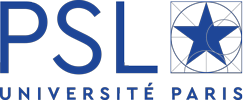The Myriade start-up: Detection and characterization of nanoparticles
PSL has partnered with Quattrocento, a company builder, to create Myriade, a start-up based on technology developed within the Langevin Institute (ESPCI Paris - PSL), to develop and commercialize nanoparticle detection and characterization instruments.
At the origin of new medical, biological or economic applications, nanoparticles are of major interest for scientific research. Previous technologies lacked a simple, reliable and compact detection and characterization method. Myriade, a start-up initiated by two PSL researchers (ESPCI Paris-PSL and ENS-PSL), offers to market instruments for the detection and characterization of nanoparticles.
A transdisciplinary project
The project began with an intuition. Martine Boccara, a biologist at ENS-PSL who is working on the TARA OCEANS project, an interdisciplinary scientific project for the observation of plankton biodiversity, was thinking about possible opportunities to use highly sensitive optical methods to refine the detection of viruses in the ocean.
In an attempt to find a solution, Claude Boccara, a physicist at the Langevin Institute (ESPCI Paris-PSL), performed various tests using traditional interferometric methods and experiments with new optical interferometry technology. This method is stable, simple and has the advantage of offering an alternative to the use of laser techniques or electron microscopy. The technology transfer (valorisation) service of PSL accompanies them for the maturation of the project: filing of the patent, then identify and negotiate a partnership with Quattrocento, company builder specialized in medtech and life science tools. The start-up was created on September 29, 2017.
Characterization at different scales
Thanks to the instruments developed by Myriade, nanoparticles such as viruses, vesicles, and metal oxides can be counted and differentiated reliably, simply and at different scales. Indeed, previously, the characterization tools allowed following only a specific category of nanoparticles. The use of a camera allows enables to observe the observation of an entire field of nanoparticles, more than a hundred at the same time via the analysis of the light scattered by each particle. In parallel, the method makes it possible to follow the Brownian movement of the particles. The analysis then consists of characterizing them and associating these two measures.
Another advantage: for each particle analysis, the method developed by Myriade requires only a small amount of product, which is a real asset when handling expensive substances (from virology and synthetic biology).

Various fields of application
Medicine, biology, environment ... The fields of application are broad, as evidenced by the first contacts with research laboratories focused on the intestinal microbiota of INRA, or specialized services in the study of the state of aquatic environments (Seine and Marne). Next step: a series of prototype tests with a selection of laboratories and expert entities in different areas, which will identify the most promising application areas. This is indeed, a project in the making.
